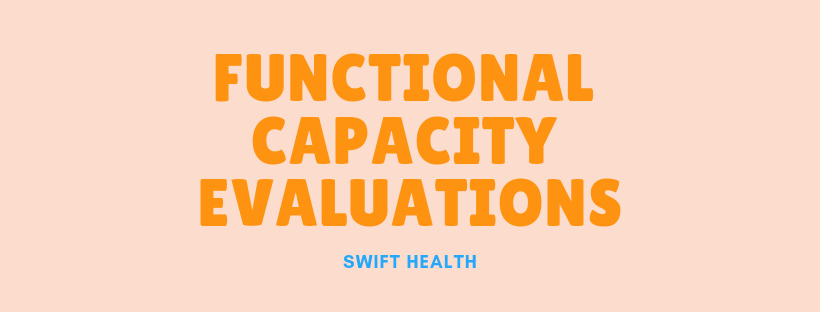2 Reasons Home Modification Assessments Are A Growing Demand

Need For Home Modifications Is Growing
More than ever, our homes serve as an important place where many day-to-day activities take place—family meals, social gatherings, and now virtual work and school. For many individuals, the setup of one’s home environment can impede their ability to independently engage in their daily routines. This is especially true within the elderly population and individuals living with a disability.
Reason 1: Almost 1 in 4 individuals will be over the age of 65 by 2031
It is estimated that over 900,000 out of 3,700,000 British Columbians are aged 65 or older and these numbers are expected to steadily increase over time [1].
By the year 2031, almost one in four individuals will be over the age of 65 [2]. As the population of older adults continues to grow, it is important to think about the types of supports this demographic will require to enable independent living.
Reason 2: 15% of BC individuals over the age of 15 have a disability
Another important demographic to consider are individuals with disabilities who make up 14.8% of the population in BC. Individuals with disabilities and their caregivers require accessible housing with supports to encourage independence in daily activities [3].
Scenario with Benjamin
Imagine a scenario where an older adult named Benjamin with deteriorating vision trips and falls in his small apartment. Despite the doctor clearing him of any serious physical injuries, Benjamin has developed a fear of falling and now faces many challenges with completing his daily routines independently. Additionally, most of his time is spent either sleeping or watching TV at home which has limited his social interactions and consequently impacted his mental health.
Sadly, Benjamin’s situation is not an isolated case. His story reflects the realities of many Canadians who face barriers to ageing in place—the ability to live independently and safely in the same home or community as you age [2]. The good news is that stories like Benjamin’s are easily preventable with appropriate home modifications to adapt current living spaces to an individual’s specific needs and abilities. An abundance of research supports the use of home modifications as a fall prevention strategy to reduce the risk of injury and improve performance in daily activities [4,5].
Luckily, OTs are some of the most qualified health practitioners to make recommendations on home modifications. An OT’s knowledge of how aspects of the environment impact one’s ability to perform daily activities put them in a unique position to address these types of situations. Some OTs have additional training in universal design methods which aims to create environments, materials, and tools that are inclusive and accessible to a wide range of individuals [6].
What should Benjamin expect?
Let’s think back to Benjamin’s story. After his recent fall, his family physician makes a referral for a Swift Health OT to conduct a home modifications assessment. Benjamin is anxious for his upcoming appointment with the OT. This is his first time meeting an OT and doesn’t know what to expect from the home visit. The OT told him the initial assessment would take around 2-3 hours to complete
Should Benjamin be concerned?
Not at all! The first home visit usually takes longer to complete because the OT will use a combination of screening tools and standardized assessments to evaluate the client and their home environment. For example, the OT will evaluate the client’s cognitive, perceptual, and physical abilities (fine/gross motor skills, balance, range of motion) in addition to their mental health, social networks/supports, and functional abilities. Additionally, environmental factors will be explored by assessing the client’s home to identify hazards and other potential barriers to performance.
What parts of your home will be assessed?
Anything that could pose as a potential risk including[7]:
- Hallways, bedrooms, washrooms, kitchen, & living room to determine if they are accessible and hazard free
- All doorways and windows
- Driveway & garage (if applicable)
- outdoor and interior stairwell
- Ensure adequate lighting in all rooms
- Tripping hazards inside the home (rugs, cords/wires, clutter) and at entryways
- And more!
Ultimately, OTs are interested in determining whether the client’s home environment is compatible with their individual abilities and overall function—hence why individual and environmental characteristics are assessed. The OT may also observe how the client navigates around their home and ask them to perform specific tasks (e.g., cooking a meal, using the washroom, cleaning) to better understand potential barriers to performance.
The OT will use assessment results to make recommendations catered to the client’s individual goals to promote independence and decrease the risk of injury. OTs can use a variety of interventions that range from low to high-cost solutions.
Examples of cheaper interventions include:
- Providing education on decluttering living spaces and passageways
- Installing grab bars, handrails, lever handles on doors, and ramps in different areas of the home
- Installing additional lighting in dimly lit rooms and/or passageways
- Modifying storage spaces for easy access
More expensive options include installing a stairlift, prescribing high-powered assistive devices (e.g., wheelchair), or making home renovations.
In Benjamin’s case, the OT discovered after observing him use the bathroom that he often trips when trying to enter the shower. This frequently occurs because of Benjamin’s poor vision in addition to the low colour contrast between the white bathtub and flooring. The OT recommended installing a grab bar wrapped in brightly coloured tape to cue him to hold onto the bar as he enters the shower. Additionally, marking the edge of the bathtub with brightly coloured tape can help with low colour contrast. These are examples of a low-cost and easy-to-implement solution!
Seniors and individuals with disabilities are eligible to receive up to $20,000 to make their homes more accessible and safer
Depending on your situation, your OT can help you apply to receive additional funding to help cover the cost of home modifications. For example, seniors and individuals with disabilities are eligible to receive up to $20,000 to make their homes more accessible and safer through BC Housing’s Home Adaptations for Independence (HAFI) program [8]. The BC government also allows seniors to receive a refundable personal income tax credit on certain home renovations [9]. Your OT will discuss different funding options to determine what is most suitable for you.
To learn more about home modification services offered by Swift Health, you can use the contact form below. One of our OTs can answer your questions and walk you through the process of home assessments.
FAQs
Contact Us
Related Posts
2 Reasons Home Modification Assessments Are A Growing Demand
Concussion: 4 Kinds of therapists that can help with your concussion recovery now
The goal of this article is to explain how various therapists and therapies can help…
Navigating Chronic Pain with an Occupational Therapist
Online Holiday Party 2020 – A Community Healthcare Team’s Version
Occupational Therapy in Mental Health Settings
You could seek out occupational therapy (OT) services for a wide variety of symptoms, such…





